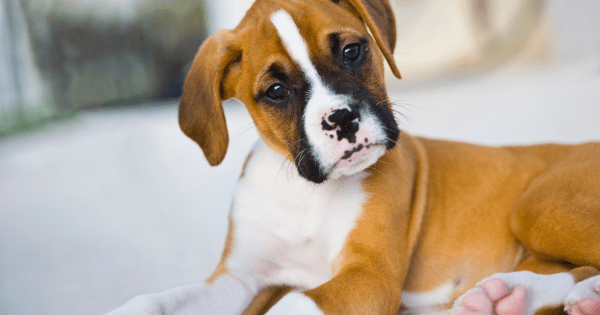Choosing the right dog breed is one of the most important decisions when bringing a dog into your life. The bond between a dog and its owner can be incredibly rewarding, but it’s essential to make sure that the dog you choose fits your lifestyle, living situation, and personality. With hundreds of breeds to choose from, finding the perfect match may seem overwhelming. This guide will help you navigate through the process by discussing key factors to consider when selecting the right dog breed for you.

1. Activity Level and Exercise Needs
One of the first things to consider when choosing a dog breed is the dog’s activity level. Dogs vary greatly in terms of how much exercise they need, and it’s crucial to select a breed that aligns with your own activity level. If you’re an active person who enjoys running, hiking, or outdoor adventures, a high-energy breed like a Border Collie, Labrador Retriever, or Australian Shepherd may be a good match. These breeds thrive on physical activity and will be happiest when they have plenty of opportunities to burn off energy.
Conversely, if you lead a more sedentary lifestyle or have limited mobility, you may want to consider a breed with lower exercise requirements. Breeds like Bulldogs, Basset Hounds, and Shih Tzus are generally more content with a few short walks per day and are often better suited for apartment living or quieter lifestyles.
Key Points:
- High-Energy Breeds: Require 1-2 hours of exercise daily (e.g., Border Collie, Labrador Retriever, Dalmatian).
- Moderate-Energy Breeds: Need 30-60 minutes of exercise daily (e.g., Golden Retriever, Beagle, Poodle).
- Low-Energy Breeds: Content with short walks and indoor play (e.g., Bulldog, Chihuahua, Basset Hound).

2. Size and Living Space
The size of the dog you choose should be appropriate for your living space. Large breeds like Great Danes, Mastiffs, and Saint Bernards may not be ideal for small apartments due to their size and the amount of space they need to move around. Even though some large breeds are known for their calm temperament, they still require space for lounging and stretching out comfortably.
On the other hand, small to medium-sized breeds, such as Cocker Spaniels, French Bulldogs, and Dachshunds, can adapt more easily to apartment living or smaller homes. However, even smaller dogs need mental and physical stimulation, so make sure to provide enrichment activities like toys and indoor playtime if you’re in a confined space.
Key Points:
- Large Breeds: Require more living space and may not be ideal for apartments (e.g., Great Dane, German Shepherd, Golden Retriever).
- Small Breeds: More adaptable to smaller living spaces but still need mental and physical stimulation (e.g., French Bulldog, Pug, Cavalier King Charles Spaniel).
3. Temperament and Personality
A dog’s temperament plays a huge role in how well they’ll fit into your home and family. Some breeds are known for being independent and aloof, while others thrive on constant human interaction and companionship. Consider what kind of personality will best match your own.
For example, if you’re looking for a loyal, affectionate dog that enjoys being with people, breeds like Golden Retrievers, Labrador Retrievers, and Cavalier King Charles Spaniels are great choices. These breeds are generally friendly, easy-going, and get along well with children and other pets.
If you prefer a more independent dog that doesn’t require constant attention, consider breeds like the Shiba Inu or the Basenji, which are known for their self-reliance and lower need for affection. Some dogs, like the Chow Chow, may be loyal and protective but less interested in being cuddly or sociable.
Key Points:
- Affectionate Breeds: Enjoy close contact and thrive on human interaction (e.g., Golden Retriever, Poodle, Boxer).
- Independent Breeds: More self-reliant and less demanding of attention (e.g., Shiba Inu, Basenji, Afghan Hound).
4. Family Situation
If you have a family, especially with young children, choosing a dog breed that is known for being good with kids is essential. Breeds like Labrador Retrievers, Beagles, and Boxers are known for being gentle, patient, and playful, making them great companions for families with children. These breeds are typically tolerant and enjoy the company of active, playful children.
It’s also important to consider whether the dog will be comfortable around other pets, like cats or other dogs. Some breeds, like Golden Retrievers and Collies, tend to be sociable and get along well with other animals. However, breeds with strong prey drives, like Greyhounds or some Terrier breeds, may not be suitable for homes with smaller pets.
Key Points:
- Family-Friendly Breeds: Patient and gentle with children (e.g., Labrador Retriever, Boxer, Beagle).
- Pet-Friendly Breeds: Sociable with other animals (e.g., Golden Retriever, Collie, Pug).

5. Time Commitment
Every dog requires time and attention, but some breeds demand more than others in terms of grooming, training, and exercise. For example, high-maintenance breeds like Poodles, Afghan Hounds, and Shih Tzus need regular grooming to keep their coats in good condition. If you’re not prepared for regular trips to the groomer or daily brushing sessions, a low-maintenance breed like a Beagle, Boxer, or Dalmatian may be a better choice.
In addition to grooming, some dogs require more training and mental stimulation than others. Breeds like the Border Collie, Australian Shepherd, and German Shepherd are highly intelligent and need consistent training and mental challenges to stay happy. If you have a busy schedule and can’t dedicate a lot of time to training, you may want to consider breeds that are easier to train and less demanding, such as the Labrador Retriever or Cavalier King Charles Spaniel.
Key Points:
- High-Maintenance Breeds: Require regular grooming and training (e.g., Poodle, Afghan Hound, Shih Tzu).
- Low-Maintenance Breeds: Easier to care for in terms of grooming and training (e.g., Beagle, Boxer, Dalmatian).
6. Allergies and Shedding
If you or someone in your household has allergies, choosing a hypoallergenic breed is a must. While no dog is completely hypoallergenic, some breeds produce fewer allergens and are less likely to trigger allergic reactions. Breeds like Poodles, Bichon Frises, and Portuguese Water Dogs are known for being hypoallergenic because they shed less dander and hair.
On the other hand, if allergies are not a concern but you want a dog that doesn’t shed excessively, consider breeds with short coats like the Dachshund, Boston Terrier, or Great Dane. Keep in mind that all dogs shed to some extent, and regular grooming can help manage shedding.
Key Points:
- Hypoallergenic Breeds: Produce fewer allergens and shed less (e.g., Poodle, Bichon Frise, Portuguese Water Dog).
- Low-Shedding Breeds: Shed minimally and have short coats (e.g., Boston Terrier, Dachshund, Boxer).

7. Climate Suitability
Some dog breeds are better suited to specific climates, and it’s important to choose a breed that will be comfortable in your region’s weather. Breeds like the Siberian Husky, Alaskan Malamute, and Saint Bernard are built for cold climates with thick coats that provide insulation. These breeds can struggle in hot and humid climates, so they may not be the best choice for warmer regions.
In contrast, short-haired breeds like the Greyhound, Chihuahua, and Dalmatian are more suitable for warm climates but may require extra protection, like sweaters, in colder weather. If you live in an area with extreme temperatures, consider how well your chosen breed will adapt to the climate.
Key Points:
- Cold-Climate Breeds: Thrive in cooler weather (e.g., Siberian Husky, Alaskan Malamute, Saint Bernard).
- Warm-Climate Breeds: Adapt well to hot weather (e.g., Greyhound, Chihuahua, Dalmatian).

8. Health Considerations
Every breed has its own set of potential health issues, and understanding the common health problems associated with your chosen breed is important. For example, large breeds like Great Danes and German Shepherds are prone to joint issues like hip dysplasia, while smaller breeds like Dachshunds may suffer from spinal problems.
It’s also worth considering the lifespan of the breed. Smaller dogs generally live longer than larger breeds, so if longevity is important to you, this is something to keep in mind. Researching the typical health issues and lifespan of your chosen breed can help you prepare for any future medical needs and costs.
Key Points:
- Large Breeds: More prone to joint and skeletal issues (e.g., Great Dane, German Shepherd, Mastiff).
- Small Breeds: Longer lifespans but may have specific health concerns (e.g., Dachshund, Shih Tzu, Chihuahua).

Choosing the right dog breed is a deeply personal decision that requires careful consideration of your lifestyle, family situation, and preferences. By taking into account factors like activity level, size, temperament, grooming needs, and health considerations, you’ll be better equipped to find a dog breed that fits seamlessly into your life. Remember, the best dog breed for you is one that aligns with your living conditions and personality, ensuring a happy and healthy relationship between you and your new furry friend.
